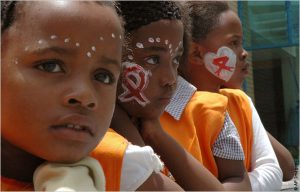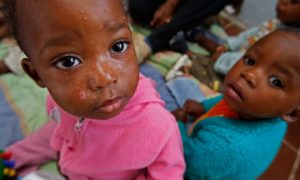AIDS or Acquired Immunodeficiency Syndrome is one of the most prevalent challenges for humanity alongside Cancer and has spread its destructive tentacles all across the world since several decades. Although the disease was discovered in the early 80s, its existence goes far back and likely has its origin in Africa. No wonder, Africa remains a hotspot for HIV-AIDS cases because of its endemic poverty and high population. Particularly South Africa and central African nations have fallen prey to the havoc of AIDS. However, with the advent of newer and better drugs, thanks to improvements in medical science, our weapons to fight against AIDS are becoming more potent.
However, merely patting ourselves on the back for the assurance that our medicines have become better and stronger is akin to blindsiding ourselves particularly when our view lacks real numbers. The war on AIDS is fought in two ways, one on the cellular level and other on the demographic level. With a burgeoning population of 7.5 billion people and still growing, the later is a war of its own and hence a peek into the statistics of this ‘war’ is necessary.
Let Us Take A Statistical Glimpse At How AIDS Has Shaped Our Global Human Health Landscape So Far

1.8 million children or individuals below the age of 15 were infected with HIV AIDS
The worldwide number of the total approximate population infected with HIV AIDS was 36.7 million people, of which 1.8 million were children or individuals below the age of 15. Although this a very dismal and damning statistic, we have to take into account the global human population growth rate. The human population is grown nearly one billion in a decade, and the under-developed third world has contributed greatly towards it. And given that most of the AIDS patients are likely from dirty poor regions such as Bangladesh and sub-Saharan Africa, we see a parallel growth in the number of AIDS patients as well.
When it comes to losing ground, latest statistics show that approximately 2.1 million people all across the world got infected with AIDS in the year 2015. The reasons for these are typically unprotected sexual contact that leads to transmission of the virus from one individual to another.

Children who were infected with AIDS got the disease from their mothers
There are other reasons though such as addictions with hardcore drugs involving the use of syringes and needles that are a potent way of passing on the virus to the user. However, 150,000 of these newly infected were children who got the disease from their mothers due to being directly born to HIV positive mothers, in a good number of cases, to prostitutes. Also, most of the children in this statistic were born in sub-Saharan Africa in nations such as South Africa, Lesotho, Zimbabwe, Swaziland, Botswana, Kenya, Zambia, and Cameroon. The mere mention of Africa is a topic that deserves its discussion in detail.
As obvious it would be, a lack of access to public health care system, which is poorly structured in the first place, is the prime reason for AIDS gaining newer grounds in this fight. Particularly in case of a country like Cameroon, prostitution has triggered off the spread of this disease to a nearly epidemic level.
When it comes to awareness about one’s condition, statistics collected over the years show that only an average of six out of ten people (60% of the infected) know that they have AIDS. The 40% which is near about 14 million people worldwide do not know what disease is causing their health to deteriorate and likely do not have access to services that test HIV.
By June 2016, nearly 18.2 million infected with HIV had access to anti-retroviral or ART medicines, which is 2.4 million more people as compared to June 2015, 10.7 million more as compared to 2010 and 17.2 million as compared to the year 2000.
In conclusion, the war against AIDS is going good and strong as a growing number of people in sub-Saharan and third world Asian countries are getting access to information and remedial services to either prevent AIDS or mitigate its effects if they are already infected. The center of this war is the awareness in AIDS-infected mothers as to how the disease spreads to their unborn children and what they need to do to prevent that from happening.
Although the war is uphill, battle by battle we seem to overcome it with every passing decade.







